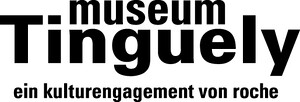January 27–May 1, 2017
Paul Sacher-Anlage 1
4058 Basel
Switzerland
Hours: Tuesday–Sunday 11am–6pm,
Thursday 11am–9pm
tinguelybasel.infos@roche.com
The Museum Tinguely is currently showing the first major monographic exhibition of British artist Stephen Cripps (1952–82). Cripps’ interest in kinetic sculpture and machines, in fireworks and the poetic potential of destruction as well as in new forms of music resulted in a highly experimental artistic praxis, especially in performative realms. His performances were radical transgressions that owing to the risks they posed for both audiences and the environment would be unthinkable today. Indeed, many of his ideas have survived only as drawings. Until his untimely death in 1982, Cripps’ main focus was on experiments with sound. The Museum Tinguely’s presentation of his cross-media output in an exhibition that is to run until May 1, 2017 is a real rediscovery.
Cripps’ artistic praxis eludes categorization, just as he himself intended. He was not the kind of artist to be pinned down to any one medium. In the course of his all too brief career, starting with his training at Bath Academy of Art in Corsham from 1970 to 1974 right up to his premature death in 1982, he built machines and interactive installations as well as staging pyrotechnic performances. He devised kinetic, mechanical sculptures; he performed; he created sound works; he experimented with film; and he produced both collages and drawings. In many of his works he combined these practices. The fleeting, the provisional, and the experimental are all key components of his art. He was thus very much a part of the 1960s project to liberate the arts.
His artistic projects ranged from designs for a mechanical garden that was to have been fitted with exploding scarecrows and a conveyor belt of rubber ducks to a machine built with a helicopter rotor that attacked the gallery in which it was installed even as the machine itself broke apart. He also realised installations that called on visitors themselves to become proactive, as in his Shooting Gallery (1976–78), where they were handed a prepared pistol with which to shoot a cymbal, a xylophone and other sound-producing objects.
Consisting of fire and light, noise and smoke, his pyrotechnic performances often disappeared at the instant of their realisation. Of special importance to him were detonations and the sound effects that they created. But creaking doors also fascinated him, as can be heard in some of the hitherto unpublished sound works presented in the exhibition. In fact, the artist was an eclectic collector of noises from a wide range of sources. Whether it was a jet engine or a lawnmower, for him it was all raw material, which at the show at the Museum Tinguely will be put to good use as an acoustic backdrop for the artist’s conceptual machine worlds and performing machines.
Jean Tinguely’s mechanical sculptures and his performances with self-destructing works of art, such as his Homage to New York (1960), were an important source of inspiration for Cripps. Jean Tinguely was even the subject of his degree thesis at art college. There are indeed a number of parallels between Cripps’ works and those of the Swiss artist he so admired. The integration of chance and destruction and the influence of the elements as an aesthetic concept are among the fundamental themes they both pursued.
As the core of the show Cripps’ drawings and collages give visitors an insight into the rich and unusual world of ideas that he inhabited. But with its combination of works on paper, audio material, film and documentary media, the exhibition also showcases the hybrid quality of the artist’s transmedia, multisensory, performative practice. Drawings and sound recordings, the visual and the acoustic thus complement each other in an experience that appeals to both eyes and ears.
The exhibition grew out of a larger research project realised by the Museum Tinguely in close cooperation with the Henry Moore Institute that manages the Stephen Cripps Estate and also presents documentation held at the Acme Studios archive.
The importance of Cripps’ work and above all how it grew out of the London art scene of the 1970s and 1980s is discussed in the catalogue accompanying the exhibition. This book, published in both German and English, comprises essays by Lisa Le Feuvre, Dominic Johnson, Sandra Beate Reimann, David Toop and Jeni Walwin as well as hitherto unpublished interviews, a gallery discussion, and much else besides. As the first major scholarly publication on the work of Stephen Cripps, the catalogue promises to become an important reference work for further study of this remarkable artist and his oeuvre. The catalogue is to be published at Verlag für moderne Kunst, ISBN (German): 978-3-9524392-8-9; ISBN (English): 978-3-9524392-9-6, available both at the Museum shop and online.
The exhibition was curated by Sandra Beate Reimann and was produced in partnership with the Henry Moore Institute, Leeds.
(The exhibition is open on Easter Monday and Monday, May 1: 11am–6pm)

